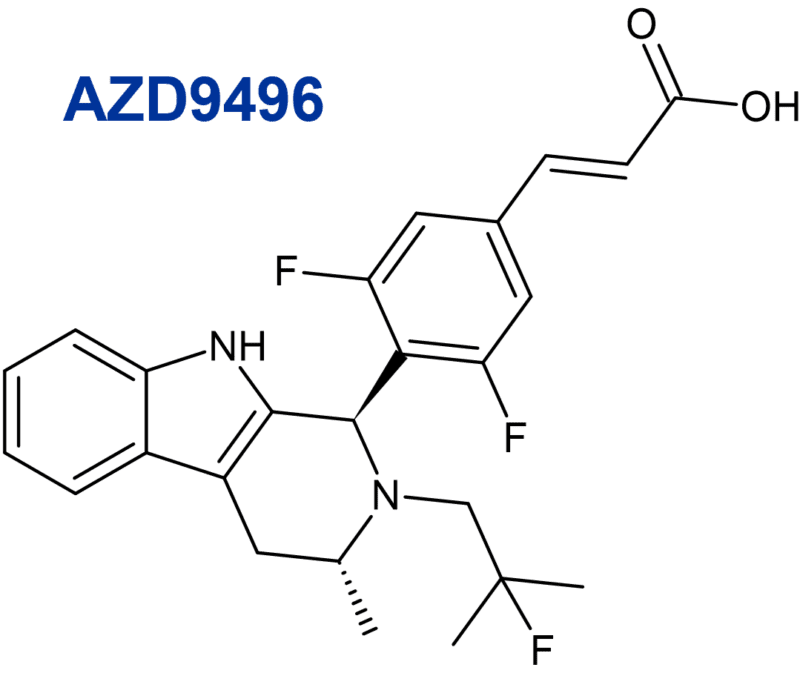 Julia and Frank are looking forward to the ISSX/MDO 2022 conference (24th International Symposium on Microsomes and Drug Oxidations) being held from 11-14 September in Seattle. Please drop by booth 28 if you are also going to ISSX.
Julia and Frank are looking forward to the ISSX/MDO 2022 conference (24th International Symposium on Microsomes and Drug Oxidations) being held from 11-14 September in Seattle. Please drop by booth 28 if you are also going to ISSX.
Julia will also be presenting a poster at the meeting on “Oxidized metabolites and unusual conjugates of AZD9496 formed by microbial biotransformation“.
Poster Details
Title: Oxidized metabolites and unusual conjugates of AZD9496 formed by microbial biotransformation
Hypha authors: Ravi Manohar, Richard Phipps, Julia Shanu-Wilson, Jonathan Steele, Stephen Wrigley, Liam Evans
AstraZeneca authors: Andrew Sykes, Tashinga Bapiro
Abstract
 AZD9496 is an orally active selective estrogen receptor degrader (SERD) whose clinical development was discontinued by AstraZeneca for treatment of estrogen receptor-positive breast cancer in favor of AZD9833, which is currently in clinical trials.
AZD9496 is an orally active selective estrogen receptor degrader (SERD) whose clinical development was discontinued by AstraZeneca for treatment of estrogen receptor-positive breast cancer in favor of AZD9833, which is currently in clinical trials.
CYP2C8 is largely responsible for biotransformation of AZD9496 to two hydroxylated metabolites observed in human liver microsomes and plasma; M3 (major) and M5 (minor). The two metabolites are diastereoisomers but whose configuration is unknown. 1
Screening of AZD9496 using microbial biotransformation and PolyCYPs enzyme incubations resulted in the formation of multiple derivatives. A total of 15 derivatives were isolated. Of the oxidized derivatives produced, 2 active metabolites were confirmed as the human metabolites M3 and M5.
Analysis of the microbial biotransformation reactions also revealed the formation of a number of conjugates with unusual mass additions, as well as a glucuronide. Three microbial strains were scaled up to generate sufficient material of the unknown conjugates for purification and structure elucidation by NMR.
All three strains produced conjugates subsequently identified as amino acid adducts, including glycine, alanine, serine and glutamine conjugates. One of these strains also produced a conjugate with an N-acetylcysteine addition to the indole aromatic ring with further oxidation in the same molecule, most likely to an N-oxide.
The formation of amino acid conjugates of drugs containing carboxyl groups is a known but uncommon biotransformation observed during microbial biotransformation of drug compounds. The generation of the amino acid conjugates involves the consecutive action of acyl CoA synthetase and amino acid N-acyltransferases, via an acyl-CoA intermediate. It is not known if any of the conjugates produced through microbial biotransformation of AZD9496 are formed in human or other mammalian systems.
Biotransformation by microbes and PolyCYPs enzymes are established techniques for generating late-stage oxidized derivatives as a lead optimization strategy. Here we show an example of the use of microbial biotransformation to create unusual conjugates.
Reference
1 Complete Substrate Inhibition of CYP2C8 by AZD9496. Tashinga E. Bapiro, Andy Sykes, Scott Martin, Michael Davies, James W. T. Yates, Matthias Hoch, Helen E. Rollison and Barry Jones. Drug Metabolism and Disposition, 2018, 46 (9) 1268-1276; DOI: https://doi.org/10.1124/dmd.118.081539